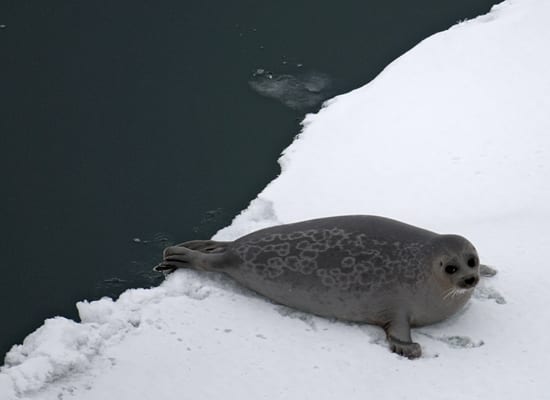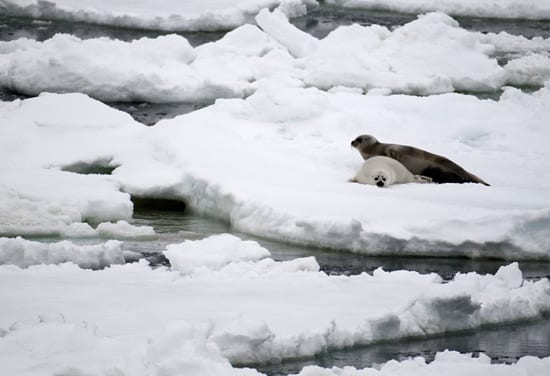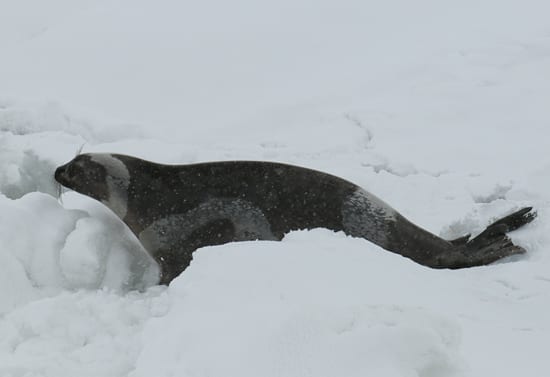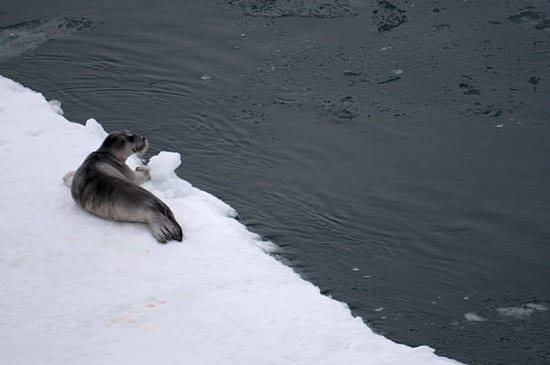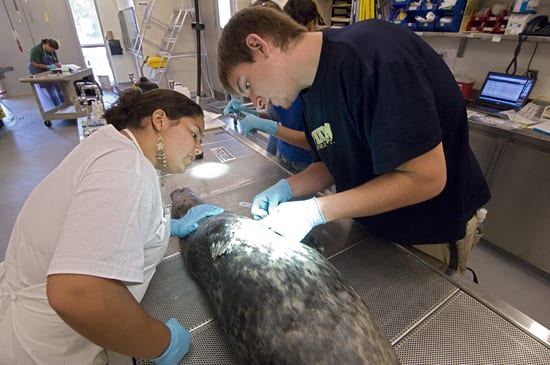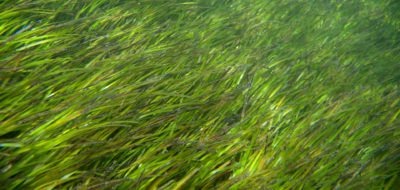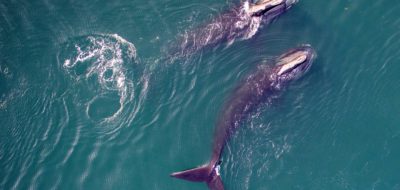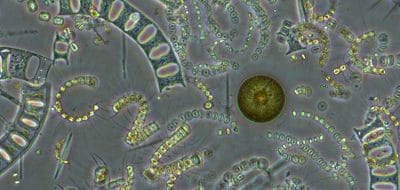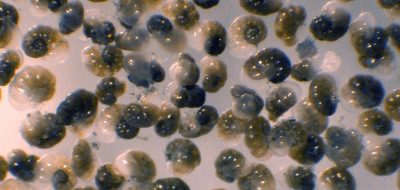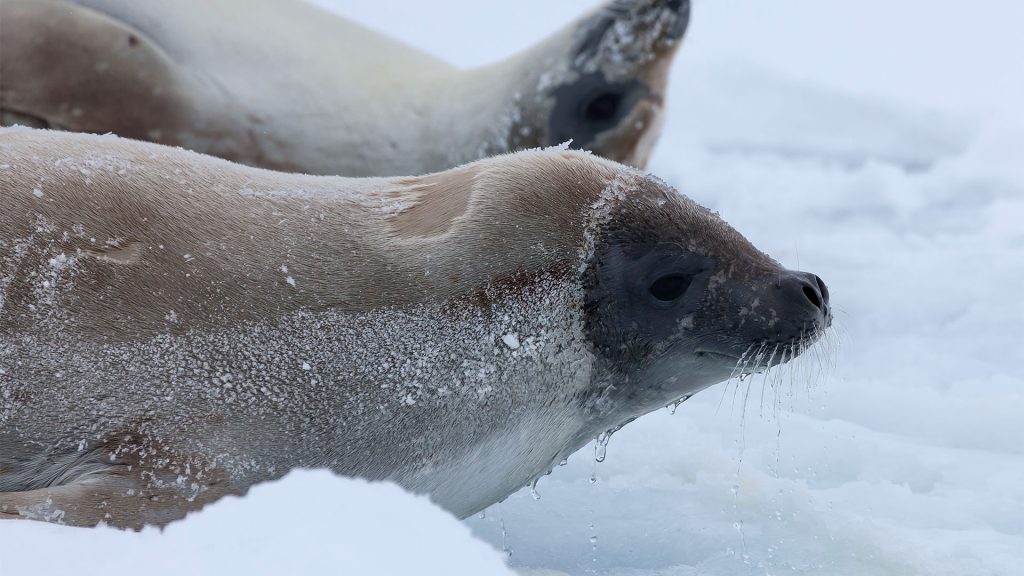
Seals like this one photographed during the Sea Ice Physics and Ecosystem Experiment (SIPEX-II) in Antarctica, depend on sea ice to survive. They hunt for food, such as fish and krill, under the ice, and use the ice surface for rest and to have their pups. (Photo by Peter Kimball, Woods Hole Oceanographic Institution)
What are they?
- Seals are pinnipeds, a group of animals with three separate families—phocidae (non-eared seals) also referred to as the crawling or true seals, otaridae (eared seals) also referred to as walking seals, and odobenidae (walruses).
Where do they come from?
- Evidence suggests that pinnipeds evolved from a bear-like land animal that hunted in the water for food.
How many are there?
- There are more than 30 species of seals worldwide.
What do they eat?
- Seals are carnivorous and dive underwater to hunt for fish, crustaceans, seabirds, and other marine animals. Whales, sharks, and even other seals are the primary non-human predators of seals.
How deep can they dive?
- Elephant seals are champion divers—they have been known to reach depths of almost 2,400 meters (more than 7,800 feet) and to remain submerged for 100 minutes.
How do they survive underwater?
- Seals are protected from the cold by a thick layer of blubber; a clear membrane covers their eyes and their nostrils close and blood circulation to most of their organs is reduced while diving. They also have sensitive whiskers that help them detect prey in murky water.
- Seals can sleep underwater and can even surface to breathe without waking.
How often do they give birth?
- A female seal, called a cow, gives birth to one pup about once a year on land. The pups are nursed anywhere between four days and one month. Exceptions include some pinnipeds such as the Steller sea lion that nurse their pups much longer with cases to around 3 years. California and Galapagos sea lions can also nurse out to a year or longer depending on the individual and in the case of the latter environmental factors. Walruses consistently have probably the longest period of maternal care that regularly lasts two years.
How often do they molt?
- Seals molt, or shed their fur, about once a year (except their first), a process that can take as long as six weeks.
Are they in danger?
- The Caribbean monk seal was declared extinct in 2008. Other species have been hunted to near-extinction.
Gray Seals
- Worldwide, gray seals number about 300,000 and are found on both sides of the Atlantic in three distinct populations: Western Atlantic (150,000), Eastern Atlantic (130,000 – 140,000), and Baltic (7,500).
- Western Atlantic gray seal bulls can reach 2.5–3.3 meters (8.2–11 feet) in length and weigh as much as 400 kilograms (880 pounds); cows are much smaller, typically 1.6–2.0 meters (5.2–6.6 feet) long and 250 kilograms (550 pounds).
- Gray seals are gregarious animals—they gather in large groups on shore to breed, give birth, and molt.
- Female gray seals live up to 35 years and males about 25 years.
- Gray seals primarily hunt squid, fish, and sandeels; their main predators are humans, sharks, and orcas.
- Gray seal pups are born in autumn (September to November) in the eastern Atlantic and in winter (January to February) in the west, and are born with white fur, which molts after two to four weeks. They nurse for two to three weeks and can quadruple in size during this time because a mother's milk is up to 50 percent fat.
- One to four weeks after being weaned, the pups disperse and have been known to wander more than 1,000 kilometers (600 miles).
- The mortality rate for gray seal pups is between 30 and 55 percent, largely due to fishing bycatch, entanglement in fishing gear, pollution, boat strikes, and hunting.

